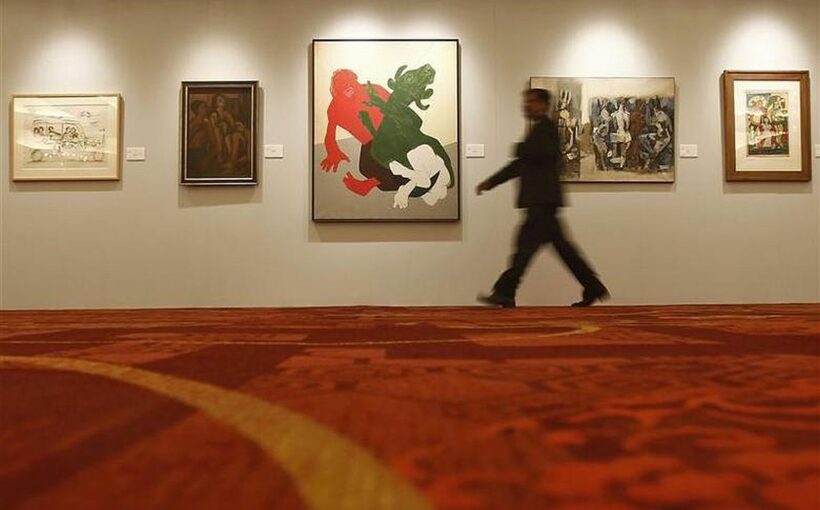The recent India Art Fair in New Delhi generated greater interest than before in local contemporary artists among a growing cohort of Indian collectors, including millennials.
But growth in Indian art is not restricted to that alone.
This year saw 91 exhibitors, a much higher number than 63 in the previous edition — indicating a flourishing market.
While live auction sales were largely suspended during Q2 of 2020 due to Covid-19 precautions, global fine art auctioneer Christie’s says online-only sales were up 262 per cent in 2020 to $311 million), marking a record total for the channel.
In 2021, online auction sales continued to grow, up 43 per cent to record $445 million with increase in average lot value and by 2022 online sales became a norm.
Total sales for Christie’s grew from a $7.1-billion rebound in 2021 to a record $8.4 billion in 2022, making it the highest annual sales figure in art market history.
In India, there are barely a dozen private art museums, experts say.
In contrast, China boasts around 2,000 privately held museums, according to government data.
And yet, a slow change is afoot.
Abhishek Poddar, founder and trustee of the newly opened 44,000 square feet Museum of Art and Photography (MAP) in Bengaluru, says the venue is a space to enjoy art without it being necessarily commercial.
MAP has a café, library, auditorium, gift centre, members’ lounge and a classroom centre.
And a technology centre has been in the planning for a few years now.
Poddar says the museum will generate interest in the arts for the sake of education, making it relevant for a wider audience.
It is supported by a team of over 100 people and funded by collaborative corporates, high networth individuals and foundations.
When a country does well economically people take interest in art — and that has happened in many nations, Poddar says.
“The Indian art world is rather shallow with most looking at only a few names in every auction or conversation: a sign that it is yet to mature.”
Some galleries are also expanding. The Delhi Art Gallery (DAG), for example, recently moved to new digs in Janpath.
Its chief executive officer, Ashish Anand, says: “Our new gallery is twice as large as the previous one at The Claridges, and has an independent terrace for hospitality.
“The typical DAG exhibition is extensive, necessitating larger spaces, while also allowing the flexibility of hosting different exhibitions simultaneously since galleries are spread over two floors.”
Anand also opened two adjacent galleries last year at the Taj Mahal Palace in Colaba, Mumbai.
“We registered growth of 40 per cent compounded over the past two years.”
DAG is looking to branch out of India and is also planning a single-artist museum in Kolkata later this year.
“We are looking at a much larger space in New York, which may see its launch this year in fall/winter.
“Dubai and London remain territories of constant interest, too,” adds Anand.
The largest art museum is being planned by collector Kiran Nadar whose Kiran Nadar Museum of Art — a stand-alone building — has been designed by Ghanaian-British architect Sir David Adjaye.
At around 1 million square feet, the facility is expected to be one of Asia’s largest.
It will be launched in New Delhi in May.
Spaces are not dictated by size alone.
Dinesh Vazirani, who runs Saffronart auction house, says he and his wife are scouting the city for a 10,000 sq ft facility to exhibit around 50 pieces in a private museum.
“The private museum is not hard to create and as long as it allows people to enter and enjoy art without being intimidated, that’s going to be good for the industry.”
For Indian art galleries, it’s about striding ahead — a step at a time.
Source: Read Full Article

